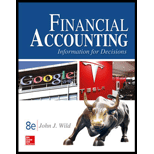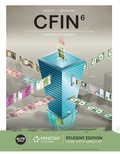
Concept explainers
1.
Introduction: When bonds are issued at par, cash is debited and bonds payable is credited for the bond’s par value.Bonds are issued at a discount when the contract price is less than the market price, making the issue price less than par.
To determine: By using Return on Equity compute the expansion if interest on the $100,000 note.
1.
Answer to Problem 7BTN
Company B issued $100,000 note with an interest rate of 10% as it yields the highest return on equity.
Explanation of Solution
- Computation of net income of the company when it issues 10% interest rate:
- Computation of net income when it issues note with 15% interest rate:
- Computation of net income of the company when it issues note with 16% interest rate:
- Computation of net income of the company when it issues note with 17% interest rate:
- Computation of net income of the company when it issues note with 20% interest rate:
Computation of ROE $100,000 note:
Computation of net income before interest expenses after issuance of $100,000 note:
- i. Computation of Interest expenses:
ii. Computation of total interest expenses after issuance of note:
Computation of ROE $100,000 note:
Working note:
- 1. Computation of Interest expenses:
2. Computation of total interest expenses after issuance of note:
Computation of ROE $100,000 note:
Working note:
- 1. Computation of Interest expenses:
2. Computation of total interest expenses after issuance of note:
Computation of ROE $100,000 note:
Working note:
- 1. Computation of Interest expenses:
Computation of total interest expenses after issuance of note:
Computation of ROE $100,000 note:
Working note:
1. Computation of Interest expenses:
2. Computation of total interest expenses after issuance of note:
2.
Introduction: When bonds are issued at par, cash is debited and bonds payable is credited for the bond’s par value.Bonds are issued at a discount when the contract price is less than the market price, making the issue price less than par.
To determine: General rule the results above shows.
2.
Answer to Problem 7BTN
In order to give the shareholders better return company must opt for debt with low interest rate.
Explanation of Solution
Cost of arranging funds and return on equity is used as an indicator of financial position and growth prospects of the company. Lower interest expense is implied by lower interest rate on debts funds and it results in more earnings for the shareholders and vice-versa. So, in order to give the shareholders better return, company must opt for debt with low interest rate.
Want to see more full solutions like this?
Chapter 10 Solutions
Financial Accounting: Information for Decisions

